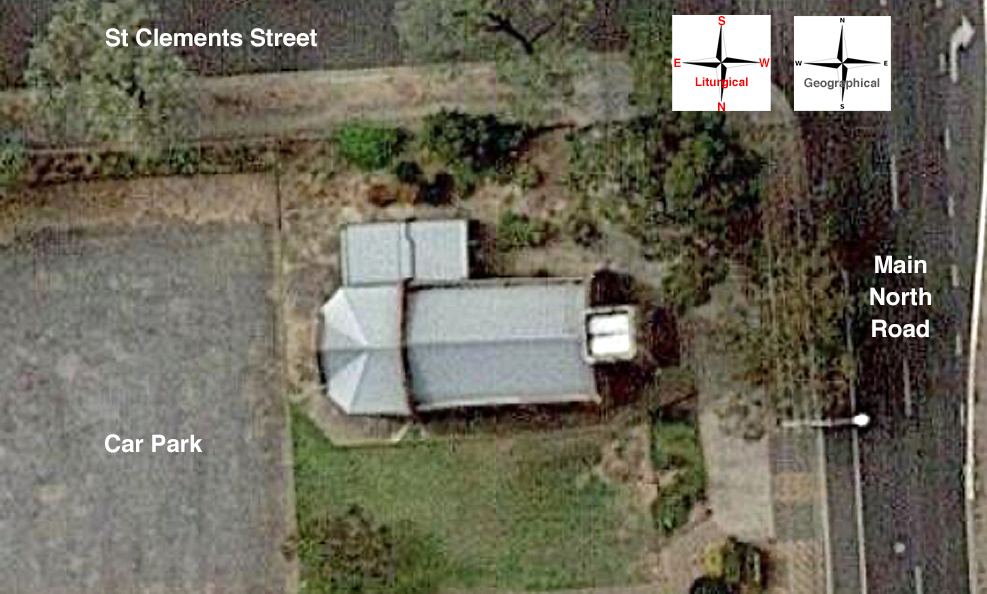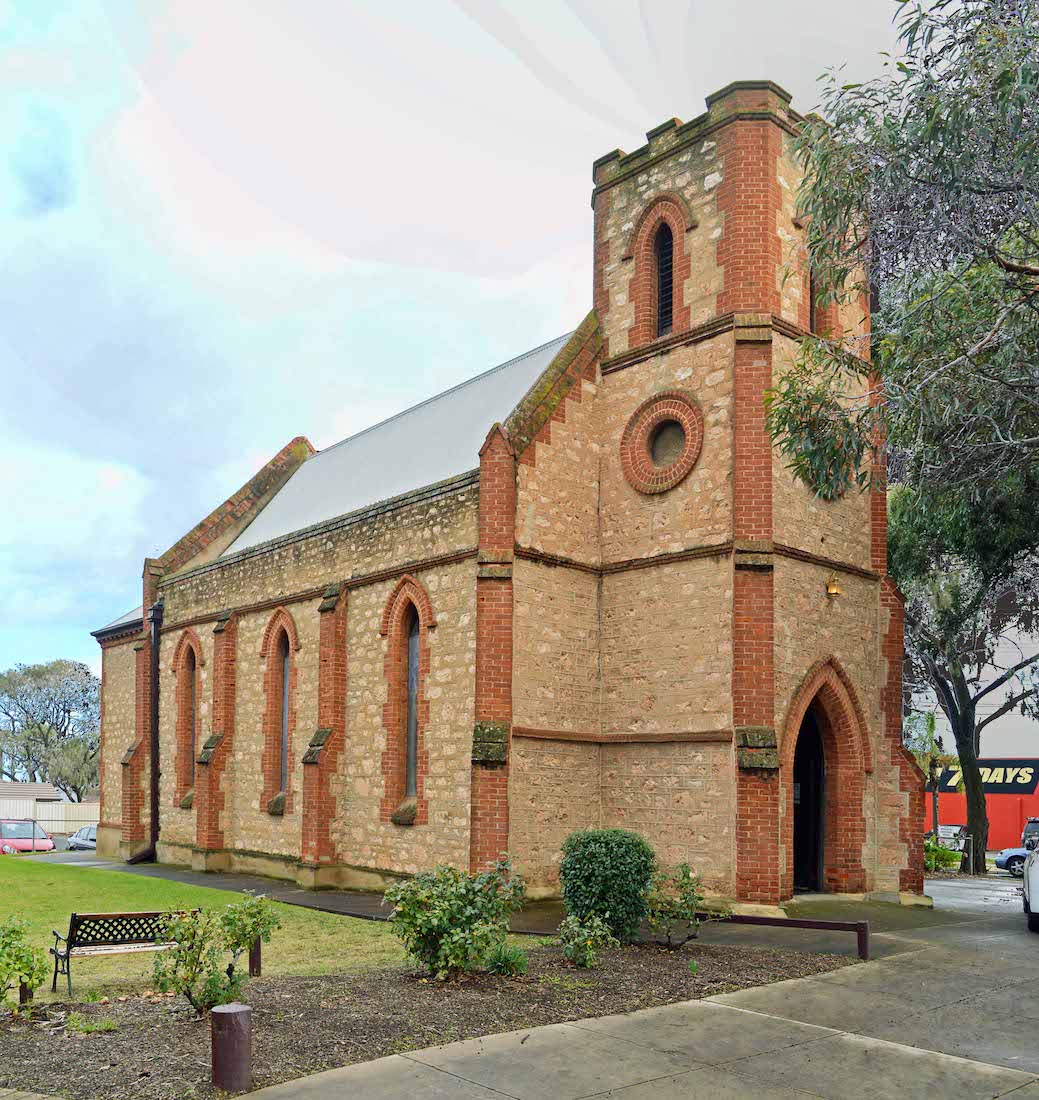INDEX
A brief history of this Church is given below. However, if you want to begin your tour of the Church immediately, tap / click on START . You can also access intermediate points in the tour by a tap / click on the following links:
NOTE ON MAGNIFYING IMAGES
With this website format the images are large enough for most purposes. If there is a need for greater magnification of an image, go to the identical photo on
https://www.flickr.com/photos/paulscottinfo/albums
and download the image as instructed.

SATELLITE VIEW
St Clements Church lies at the corner of the very busy Main North Road and the side-street, St Clements Street. At the back, and off the side street, is a large Church car park.
With most of my websites, we use liturgical directions, in which the sanctuary is assumed to lie in an exact East direction (with a capital E), and the other directions accordingly. This enables easy navigation around any church by a viewer who has never visited the church. Unfortunately, St Clements is oriented in exactly the opposite direction, with the sanctuary facing geographically due west! Since this might lead to some confusion, and since the plan for St Clement’s is particularly simple, we shall avoid using directions altogether, navigating the outside with commentary, and using the words ‘left’, ‘right’, ‘front’ amd ‘back’ as would be understood by a person first entering the Church and facing the altar.
St Clements has a simple rectangular structure with a sanctuary apse at one end, and a tower at the other end, closets to Main North Road. Near the sanctuary, there is an added vestry rectangle.
We begin our exploration from the carpark near the vestry, and walk around the Church in a clockwise direction. We then enter the Church by the door under the tower.
HISTORY
Years Built: 1858 – 1867
Address: Main North Road, Blair Athol SA 5063
The Foundation Stone for St Clement’s was laid on the 27th July 1858 but the Church was not opened for worship until 1867.
In 1880 a shed was erected at the back of the Church and served as a Vestry for many years.
In 1882 the Vestry decided that the Church should be restored and enlarged and a new Chancel was built at a cost of four hundred pounds ($800).
In 1901 the stone vestry was built to take the place of the shed which had been erected some twenty years earlier.
In 1918 the Church had a thorough renovation and some sixty pounds ($120) was spent. Electricity was also installed.
In 1969 urgent repairs were needed to maintain the old building. Advice was sought from independent sources, including the National Trust, and it was agreed to carry out major restorations and so preserve the old church which had become known as the ‘Little Church on the Hill’, and was for many years to come. It was also a landmark for ships coming into port.
For many years the City Emblem of Enfield depicted St. Clement’s Church in the top right hand corner. The Church is warm and welcoming with beautiful stained glass windows each telling their own story. Almost all the furniture and fittings are in memory of past parishioners.
The Foundation Stone for the Hall was laid in 1964.The building which included an office and amenities was finished in 1966 and named after a prominent pioneer family, the Ragless family. In the early nineteen eighties a room under the hall, known as the ‘Down Under’ opened as an Op. Shop. It became a very good source of outreach as well as income and in 1999 extensions were added. For various reasons in the early 2000s it was decided to close the shop. It was not until 2009 that the doors were opened again and a new parish venture started – the Book Shed, which is open on Saturday mornings. This building also houses a Men’s Shed which opened in February 2014 and is open on Thursdays.
By Margaret Parfitt
A more extensive version of the church’s history can be found here.
Who was St Clement?
The parish church of St Clement’s – Enfield, South Australia, derives its name from the third Bishop of Rome – Clement (88-97 AD).
Clement wrote a letter to the Christians in Corinth to settle a controversy among them. While its tone with one of charity rather than authority, this letter showed that the Bishop of Rome considered himself empowered to intervene in the affairs of another community; and the fact his letter was soon regarded as having almost canonical status, evidence of the Roman Bishop’s prestige throughout the whole of Christendom.
There were eight principal subjects discussed in what was regarded by many Christians of the third and fourth centuries, as scripture. Each of the subjects ended with a doxology: ‘Brothers, we must think of Jesus Christ is of God’.
Clement, who was regarded as the oldest of the Apostolic Fathers, was exiled to Siberia, where he ministered to the needs of the exiled Christians. However, eventually he was sentenced to death, and was tied to an anchor and lowered into the sea to his death.
The Anglican church at Enfield, South Australia, known as St Clement’s Church, has its patronal festival close to St Clement’s Day, November 23 each year, and the sign of the anchor shown on the front of the altar together with two fish which represent the sea into which Clement was cast to his death.



